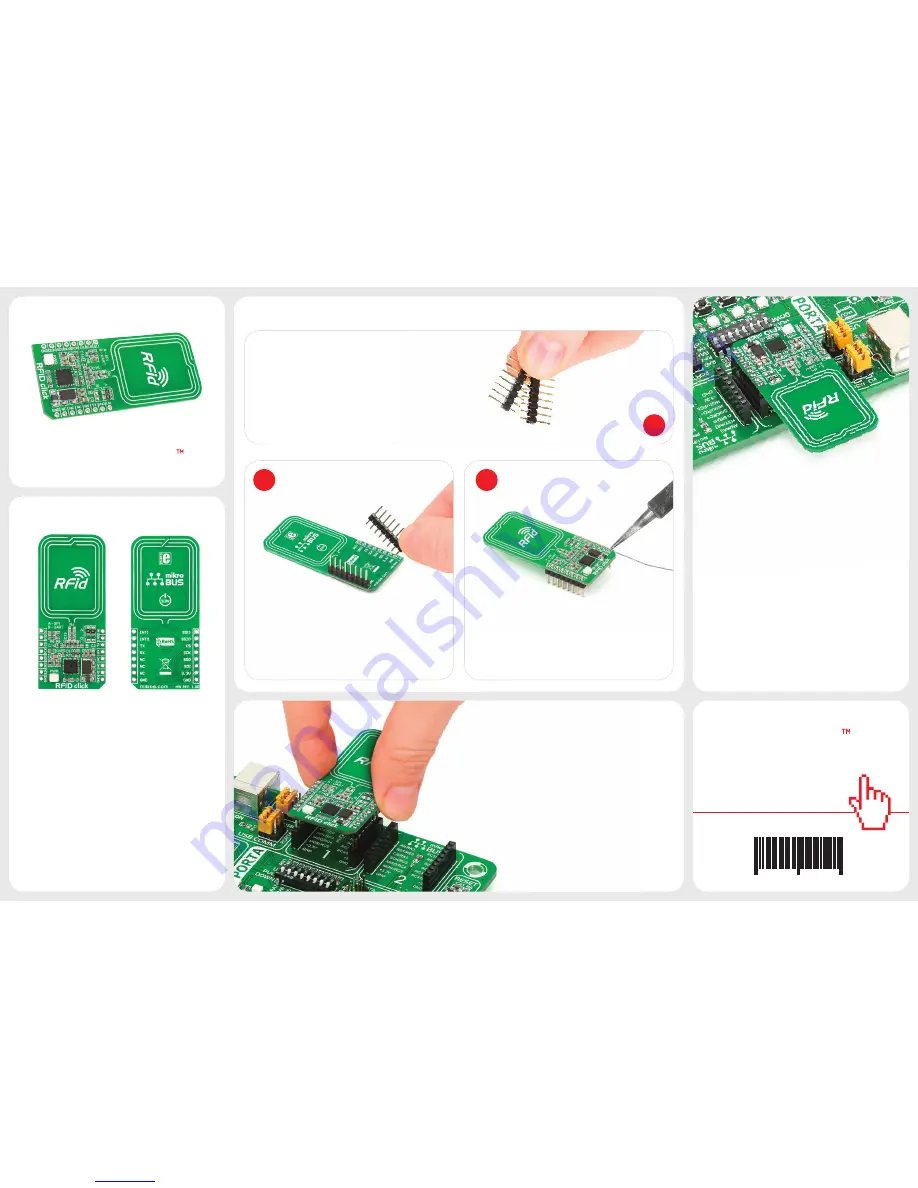
1. Introduction
Once you have soldered the headers your
board is ready to be placed into desired
mikroBUS
™
socket. Make sure to align the
cut in the lower-right part of the board
with the markings on the silkscreen at
the mikroBUS
™
socket. If all of the pins are
aligned correctly, push the board all
the way into the socket.
3. Plugging the board in
2
3
2. Soldering the headers
1
4. Essential features
Turn the board upward again. Make sure
to align the headers so that they are
perpendicular to the board, then solder the
pins carefully.
Turn the board upside down so that
bottom side is facing you upwards.
Place shorter pins of the header into the
appropriate soldering pads.
Before using your click
™
board, make sure
to solder 1x8 male headers to both left
and right side of the board. Two 1x8 male
headers are included with the board in
the package.
click
BOARD
www.mikroe.com
RFid click Manual
ver. 1.00
0 100000 024140
RFid click
™
is an accessory board in
mikroBUS
™
form factor. It’s a compact and
easy solution for adding RFid to your design.
It features
CR95HF
13.56 MHz contactless
transceiver as well as trace antenna. RFid
click
™
communicates with the target board
microcontroller via
mikroBUS
™
UART (TX,
RX), SPI (MISO, MOSI, SCK, CS) INT, RST,
PWM and AN lines. The board is designed
to use 3.3V power supply only. LED diode
(GREEN) indicates the presence of power
supply.
RFid
click
RFid click
™
with its
CR95HF
IC is a RFid
module with integrated transceiver for
contactless applications. The board
contains
dedicated internal frame controller and analog
front end (AFE) for RF communications. It
supports ISO/IEC 14443 type A and B, ISO/IEC
15693 and ISO/IEC 18092 protocols (tags) as
well as the detection, reading and writing of
NFC forum type 1, 2, 3 and 4 tags.
- datasheet search engine


















